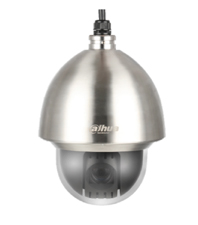Dahua Technology offers what it terms an intelligent solution for securing ports.
As for system architecture, Dahua has adopted a centralised management model for video surveillance systems which considers the port’s operational management. The centralised management model belongs to a second-tier monitoring, which means a monitoring centre in the port manages all system resources. Command centres and sub-control centres cover the command dispatch and monitoring from top level customs and police stations to subordinate customs, maritime affairs and frontier inspection.
An overall control centre is responsible for site access and management. This includes the video storage and video surveillance. The control centre monitors the general running of port operations, and coordinates safety around the port. In this centralised model, the control centre displays video resources, while the sub-control centers mainly provide real-time video surveillance for departments such as customs, and quarantine and inspection; as a way of solving the challenge of sharing and multi-level administration between departments.
Dahua Technology has developed an ID system at the entrance control which can identify a vehicle number plate. As a multimedia management system it’s combined with a variety of technologies including image contrast, character superimposing and voice function. Users can check the vehicle access and statistics reports from any terminal. Meanwhile, a “blacklist” database is stored in the software, so any blacklisted vehicle will be recognised and can be prohibited from passing. Other vehicle can pass freely.
For entrances, Dahua has an automatic container equipment identification system, which automatically recognises the container number. A development kit and software interfaces allow for integration with other system. The system includes alarm triggers, number recognition, data storage and data transmission. After receiving the results from the recognition, a user can carry out operating procedures or back-end processing, such as comparison, analysis or release. The warning function module of image identification is used in container terminals. This can function as an early-warning and protect cargo from theft. Intrusion prevention can also be added, the product developers add.
Real-time video surveillance was developed after research into neutral networks, mass data storage, and data computing. The monitor would transmit the images and videos in forms of video stream or image stream. It not only shows people’s faces, but can store still images. The real-time videos and images of vehicles and containers can be stored digitally. By using the ISO number, container number or facial recognition data and integrating it with the logistics, quay, yard or customs system, users can find the location of a container. This means that the daily management procedures are more automated including container inventory management, and related logistics. It saves time in checking the containers, and minimises error, the product company adds.
Berth monitoring
For the loading and unloading of cargo in container terminals, high-definition video surveillance can record all information. Cameras require a wide dynamic range, backlight compensation, and an anti-shake function. Dahua’s PTZ comes with anti-corrosion protection, designed for berth monitoring. This camera is suited the makers claim to even the harshest conditions. It has a 6KV lightning rating and a temperature range of minus 40 degrees C to 70 degrees C (minus 40 degrees F to 158 degrees F). The camera conforms to an IK10 impact rating making it capable of withstanding the equivalent of 55 kg (120 lbs) of force, and has an IP68 rating making it suitable the product company says for demanding outdoor applications.










